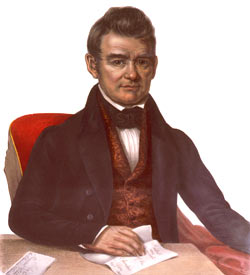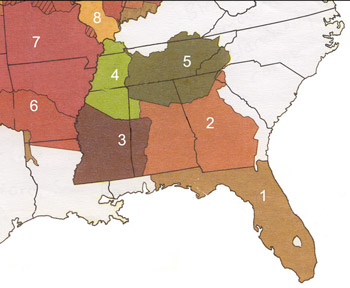 After reading through both of my primary sources having to do with John Ross and his opposition to Indian removal, I felt like I had a pretty clear interpretation of what Ross was trying to do and the type of person he was. I also felt like I understood what was going on between the government and the Indians. My initial interpretation was to think of John Ross as a hero who was sticking up to the United States government for his people, the Cherokee. In his speech he talked about how many other Indian groups were relocating to the west like the government told them to do, but a majority of the Cherokee people were staying in their homeland and it was a pretty lonely feeling. He was making a point to let the government know that he wasn't going anywhere and that he would not go down without a fight. The protest that Ross made to Congress had a lot of the same meaning as the speech. He was arguing that the treaties between the Cherokees and the government were not legitimate and had been obtained by fraud. This also showed me that he was willing to fight for his people and work hard on their behalf. His intentions seemed genuine, and his effort to fight Indian removal seemed very noble. My interpretation of the primary sources is that Ross was standing up to the government for bullying the Cherokee and the rest of the Indian groups. I also thought of John Ross as a hero.
After reading through both of my primary sources having to do with John Ross and his opposition to Indian removal, I felt like I had a pretty clear interpretation of what Ross was trying to do and the type of person he was. I also felt like I understood what was going on between the government and the Indians. My initial interpretation was to think of John Ross as a hero who was sticking up to the United States government for his people, the Cherokee. In his speech he talked about how many other Indian groups were relocating to the west like the government told them to do, but a majority of the Cherokee people were staying in their homeland and it was a pretty lonely feeling. He was making a point to let the government know that he wasn't going anywhere and that he would not go down without a fight. The protest that Ross made to Congress had a lot of the same meaning as the speech. He was arguing that the treaties between the Cherokees and the government were not legitimate and had been obtained by fraud. This also showed me that he was willing to fight for his people and work hard on their behalf. His intentions seemed genuine, and his effort to fight Indian removal seemed very noble. My interpretation of the primary sources is that Ross was standing up to the government for bullying the Cherokee and the rest of the Indian groups. I also thought of John Ross as a hero.
My interpretation was challenged, however, by the article I read that involved John Ross and his connection to the Cherokee people. From my point of view, the article made John Ross out to be somewhat of a dishonest man. The article claimed that Ross would use old myths about Cherokee people to help fight colonialsism. While the primary sources did not talk specifically about how Ross went about fighting colonialism, this article opened my eyes a little more to the fact that I can not just assume Ross is a true hero. This might be a stretch, but the story of Robin Hood kind of came to mind. Ross could have been dushonest to the government, but was doing it for the cause of helping the Cherokee people. It correlates with Robin Hood who obviously stole from the rich and gave it to the poor. The article did not necessarily insinuate that Ross was doing it for selfish reasons, so that is the interpretation I had after reading the article through a different lens.
The primary sources I have read do not elude to the fact that John Ross was a sneaky man, and no evidence is in the speech and protest that he was standing up to fight colonialism for selfish reasons only. Obivously, since they are both spoken sources from Ross himself, they won't be anything negative about him. However, I still believe that my original interpretation of Ross as a good leader and hero is more accurate of the true story, regardless of what the article describes. The protest Ross made against the government that the treaty was illegitimate makes a lot of sense to me because I can't see the Indians making a deal that would require them to leave their homeland. I don't believe that the Indians would be at a peace with that settlement. The accusation that the government obtained this treaty by fraud makes sense to me. Another reason I believe Ross is genuine in his protest is because many Cherokees also protested the treaty with him. It was believed that almost 15 thousand people from the tribe protested it. With John Ross leading this protest, my interpretation of him being a great leader and hero appears to be on target after reading both of my primary sources and reading the article as a secondary source through a different lens. All of the sources are important and have added to my knowledge, but I am confident in my original interpretation that John Ross was a genuine leader for the Cherokee people and Indians as a whole.



